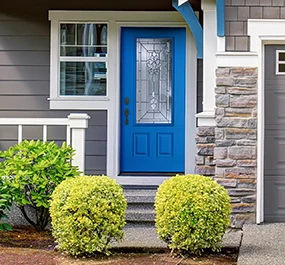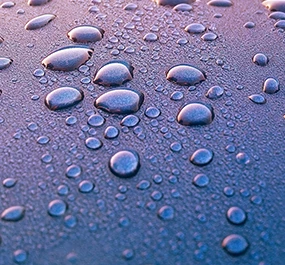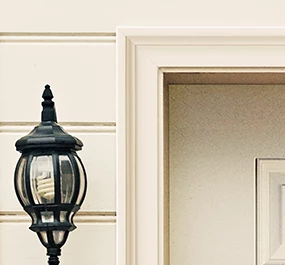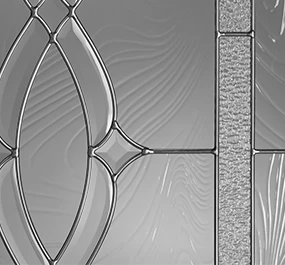The front door is the centerpiece of your home’s entryway, welcoming guests into your residence while contributing to the first impression gleaned from your dwelling’s exterior. A sturdy front entrance can also be the home’s first line of defense against unwanted visitors and harsh elements, protecting the people and possessions that make your house a home. So, how long do front doors last?
Average Door Lifespan
The average lifespan of a door is dependent on a number of factors, including material, fitting, instillation, amount of regular maintenance and built-in elemental protections. No matter the material, a door that’s properly fitted and installed, routinely serviced and protected by a home feature like an overhang is going to meet or exceed its predicted expiration date—which, for doors, is usually about 30 years from the date of first use.
One of the main deciding factors of how long a front door lasts, material, usually comes in one of either wood, steel or fiberglass.
Wood
If you’re shooting for a classic look—or have a classic (read: older) home—it’s very possible you have experience with wooden front doors. Wood is a versatile material and can be used to add flare to your front porch area, create a rural look, or lend a touch of tradition to your home’s overall aesthetic. However, as wood is the most sensitive substance on this list, that unique presentation can only be maintained through regular door upkeep.
When they’re starting to look worn, wooden exterior doors should be polished to maintain that new-door look. They should be dusted to avoid wear from both salt and, of course, dust. Once you start noticing wear thanks to tell-tale signs like worn paint and rust, refinish your door—it isn’t cheap, but if you aren’t good with your hands, consider hiring a professional. Speaking of rust, check and clean the door’s metal bits at least once a year.
With all that work, plus accommodations to protect a wooden door from some of nature’s most destructive phenomena, expect a door made from wood to fall into that 30-year lifespan.
Steel
If you live in an area that experiences harsh winters, a steel door may already be a fixture at your home. These doors can be thick, so they’re great at saving you money on heating bills. They also provide good protection against any would-be law breakers attempting to break and enter your front door.
The average lifespan on steel doors is also higher—and that improvement comes with positive maintenance changes thanks to the galvanization process. Usually, the steel used to make doors is galvanized, meaning it’s dipped in zinc. This adds resistance against damage and corrosiveness, meaning rust and scratches become less likely to impact the health of your front door. Most steel doors carry a lifespan that could last anywhere from 30 to 100 years.
Fiberglass
Thanks to the versatility of fiberglass, doors made from this material vary in look and color. This allows them to slot right into the entryway of any home, regardless of architectural style. They may be lightweight compared to doors made from the other two typical door materials, but that doesn’t mean they aren’t a sturdy, safe, warm, energy-saving choice. Going with a fiberglass door can also save money when compared to the costs of customization with wood or sheer mass when considering steel.
Fiberglass doors are the easiest of the three to maintain and average about 70 years before irreparable wear, making them a lifelong investment.
Factors that Affect How Long a Door Lasts
Despite the different materials, there are some universal factors that can impact the performance of any door, be it wood, metal, or fiberglass.
How Often Are You Washing Exterior Doors?
Using a small amount of dish liquid and a sponge—don’t use harsh cleaning tools like steel wool—wipe down the outside of any exterior doors on your home. This will help prevent sometimes irreversible signs of wear, like rot and rust. Wash doors as often as it seems required, but don’t go a month without showing some attention towards your doors that lead outside.
Treat it Right
Yes, it’s important to be mindful of your front door to avoid causing any unnecessary damage during everyday use. That’s not what I’m talking about, though. Doors treated with things like sealed coatings or weather-resistant paints fare better than those without.
Upgrade Your Door’s Lifespan with Plastpro
Fiberglass doors present a reliably long lifespan with little maintenance required, and Plastpro’s fiberglass doors come with an added bonus: a foam core that contributes to improved energy efficiency. If you’d like to get a clear close-up of Plastpro’s sustainable fiberglass doors, it’s possible to preview and purchase Plastpro products near you.



